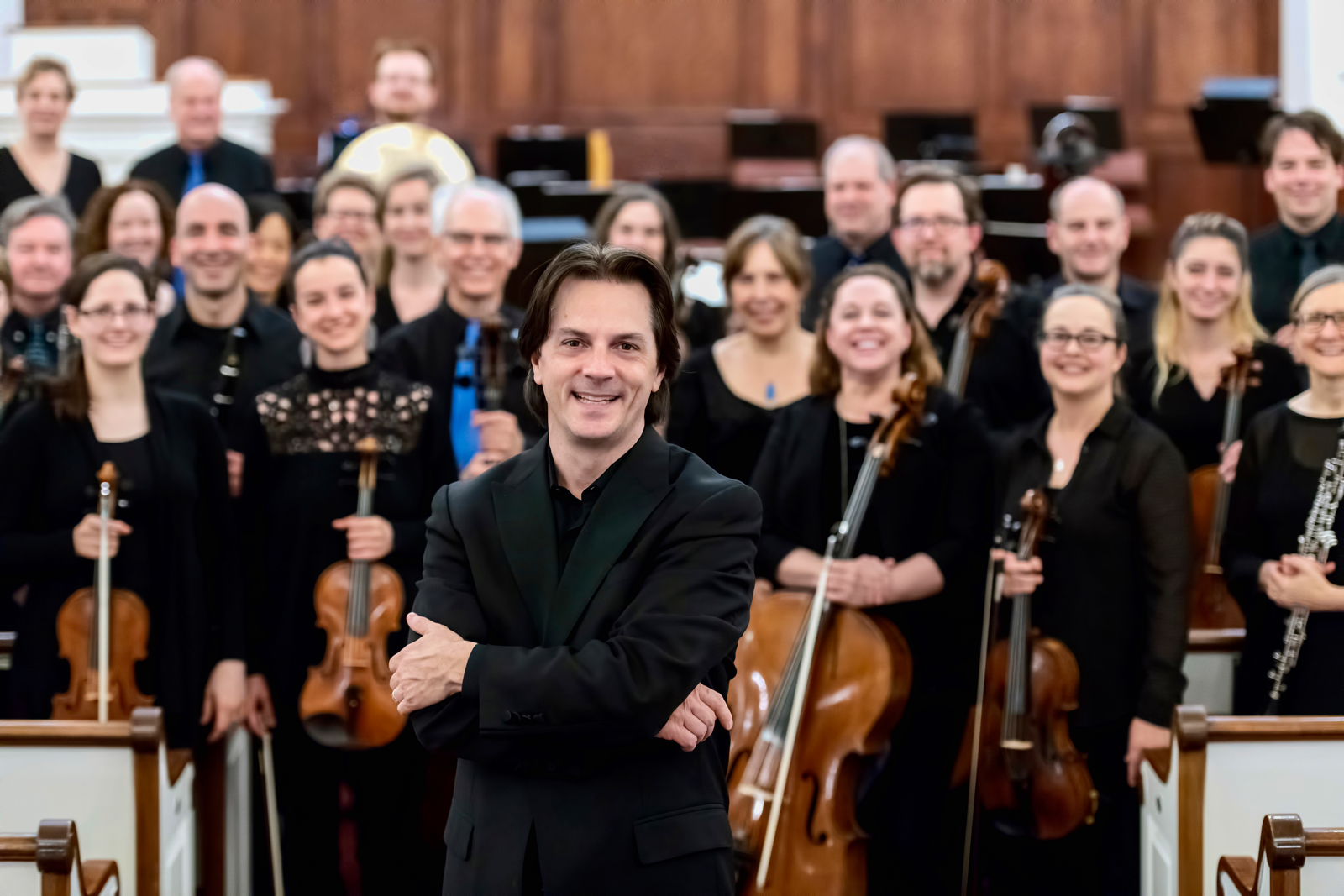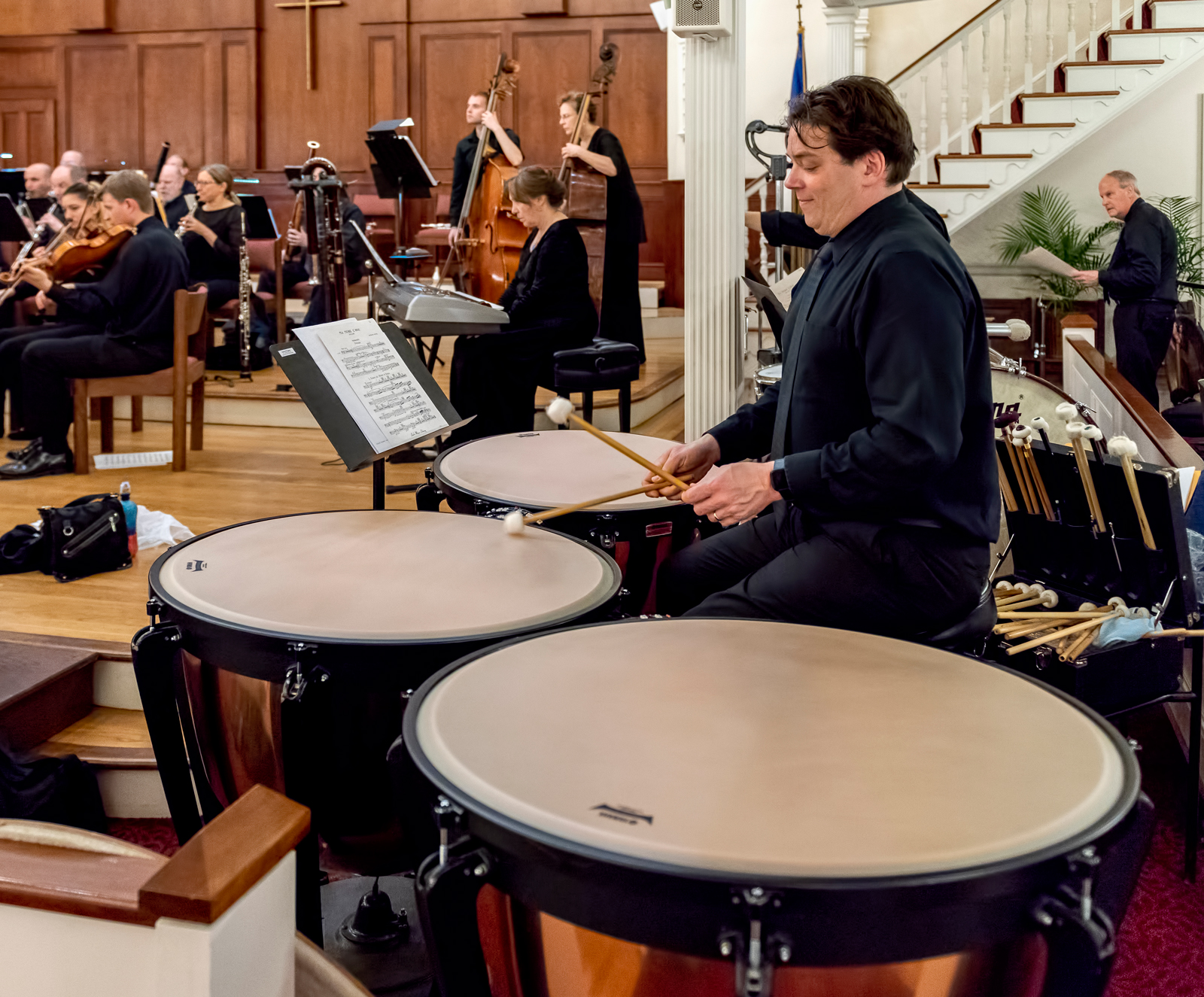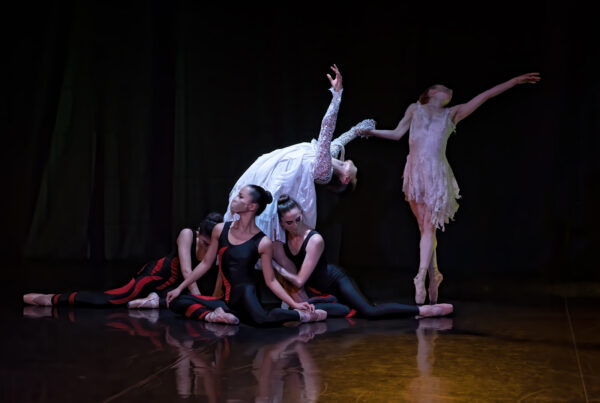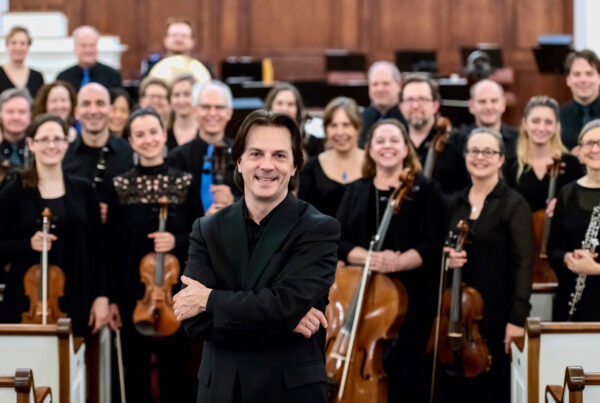
Captivating, imaginative conductor Daniel Meyer was appointed permanent Artistic Director and Conductor of the BlueWater Chamber Orchestra in April of 2019. As Music Director of the Erie Philharmonic and Lakeside Symphony Orchestra, Artistic Director of the Westmoreland Symphony, and Director of Orchestral Activities at Duquesne University, Mr. Meyer has reinvigorated orchestras with his innovative programs, engaging presence and keen musical intellect. We sat down with him to talk about the the new collaboration in store with Verb Ballets on November 21, 2020.
Photos: Susan Bestul (2019 Prior to COVID-19)



Tell us about your background working with both dance and orchestra together?
My first experiences with ballet and live orchestra were with the Pittsburgh Ballet and Attack Theatre, a modern dance ensemble based in Pittsburgh. With the Pittsburgh Ballet, we performed the Balanchine ‘Serenade’, which re-orders the movements of the Tchaikovsky’s Serenade for Strings into an emotional ensemble piece. With Attack Theatre, we created a premiere version of Stravinsky’s L’histoire du Soldat, a fascinating wartime Faust tale for chamber ensemble and dancers. I learned right away that the tempos and inflections that best suit the dancers will ultimately reveal the best results, even if I would make different choices in the concert hall. It’s truly a collaboration, and I also do my best to stay connected to the physicality of what the dancers do – it deeply influences how I pace the music-making.
The program is titled “Building Bridges Together,” how did the organizations come to that name and what were you hoping to share?
With the pandemic still raging in our country, we have been anxious to create experiences that keep us connected to our audience. We want to find ways to build a bridge to our audience at home, and that led to an idea that we could build a bridge to one of our treasured artistic partners in Verb Ballets. The passion and beauty of dance is such a visual experience, and to marry that to the way BlueWater Chamber Orchestra makes music and satisfies our need for auditory stimulation, I hoped that the combination would in some way strengthen us through this tie and give us hope for the future.
Are there any unique challenges or opportunities conducting with a socially distant orchestra?
We are performing with at least six feet between each of us, so the way that we subconsciously react to each other changes drastically. I also never fully appreciated how our facial expressions signal to each other what we are about to do, how we will do it, and how we feel about it all. I do believe we have to finely-hone our other senses to a degree that compensates for what we lack in visual stimulation and visual cueing.
The program features Albinoni’s Adagio in G minor for strings and organ. Which may not be by Albinoni at all. What drew you to the music?
The Albinoni Adagio is likely 95 percent the work of twentieth-century composer/historian Remo Giazotto. He claims to have based the piece on actual parts he unearthed from Abinoni’s archives. I happen to think this music owes a bigger debt to the great lyrical composers of Italy like Puccini and Mascagni. But that gorgeous singing quality is what makes the Albinoni/Giazotto so sensuous and lends itself so well to a Pas de deux. It’s a guilty pleasure to perform this piece, and I feel less-and-less guilty the more I have the chance to conduct it!
Why did you choose the Anton Webern’s Langsamer Satz in a stand-alone performance? What about this piece does it bring out in the orchestra?
I just happen to resonate with music from this part of the world at this point in history. Composers like Webern, Schoenberg and Mahler were grappling with how to sound new while continuing to exploit the densely chromatic harmonies and rich textures Richard Wagner had drawn out of his orchestras. This work represents a young Webern just beginning to blossom as a composer under the tutelage of Arnold Schoenberg, but it already belies a complete absorption of the language and gestures of his teacher and the great Romantic composers of the German-speaking world.
How has working with film brought out the unique qualities of the orchestra?
In this format, our audience has a close-up view of our musicians working thier hardest to fill each musical gesture with meaning and passion. You can really feel as if you are a specially invited guest who gets to hear and watch the orchestra onstage. I happily get to experience this sensation on a regular basis, and it gives me great pleasure to share this vantagepoint with our audience.
What did you most enjoy about working with Verb Ballets?
I first had the pleasure to experience Verb Ballets when they came to Lakeside Chautauqua to perform with the Lakeside Symphony Orchestra. I was immediately struck by the creativity of the choreography, the fascinating choices of music, and the notably high quality of dancing. There was obviously a special chemistry between the dancers, and that came across to clearly on the Hoover Auditorium stage. Once I had then the chance to collaborate with Maggi and Richard the following summer, I knew we were kindred spirits in terms of our love to create, execute, and dream. I just knew that someday it would be inevitable that the BlueWater Chamber Orchestra and Verb Ballets would collaborate.

Daniel Meyer
As Artistic Director of Cleveland’s BlueWater Chamber Orchestra, Music Director of the Erie Philharmonic, Artistic Director of the Westmoreland Symphony and as Music Director of the Lakeside Symphony Orchestra, Daniel Meyer has reinvigorated orchestras with his innovative programs, engaging presence and keen musical intellect.
In addition to collaborating with world-renowned soloists such as Marc-André Hamelin, Sharon Isbin, Gil Shaham, Jeremy Denk, Daniil Trifonov, Midori, and Emanuel Ax, Meyer’s passion for connecting with audiences has led him to develop strong ties with the community though frequent radio and television appearances, press interviews, music talks, appearances in local schools, and speaking from the concert stage. In continuation of his longtime dedication to music education and community involvement, Meyer created Beethoven 4/4, a four-year project focusing on the life and works of the great composer with the Erie Philharmonic.Meyer returned to the Pittsburgh Symphony and West Virginia Symphony to conduct a new production of Mozart’s Così fan Tutte. He recently recorded the music of Hanson, Diamond, and Daugherty for the Bavarian Radio with the Bamberger Symphoniker. In his role as Director of Orchestral Activities at Duquesne University, he has embarked on a recording project of the concertos of Lynn Purse and collaborates with pianist David Alan Wehr and bass-baritone Guenko Guechev. Recent guest appearances include the Detroit Symphony, Rochester Philharmonic, Cincinnati Chamber Orchestra, Portland Symphony, Symphony Silicon Valley, Württembergische Philharmonie, Staatsorchester Darmstadt, and the Nuremberg Symphony in Germany.





































